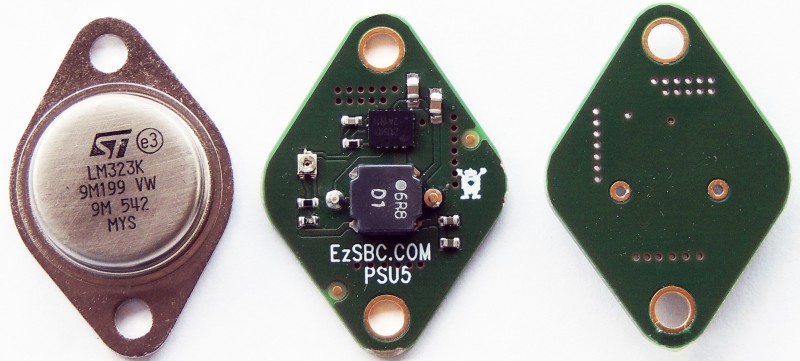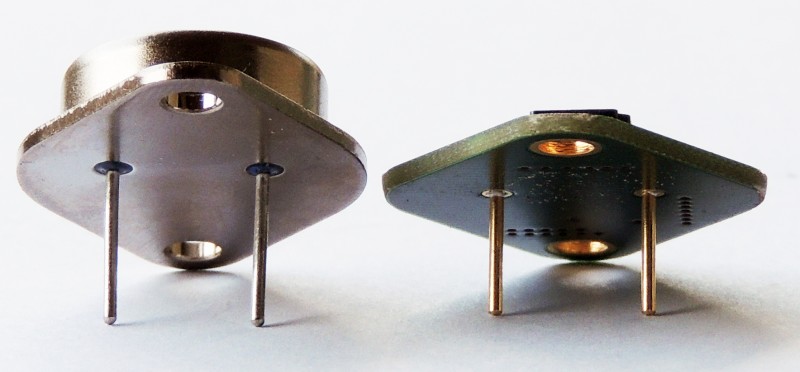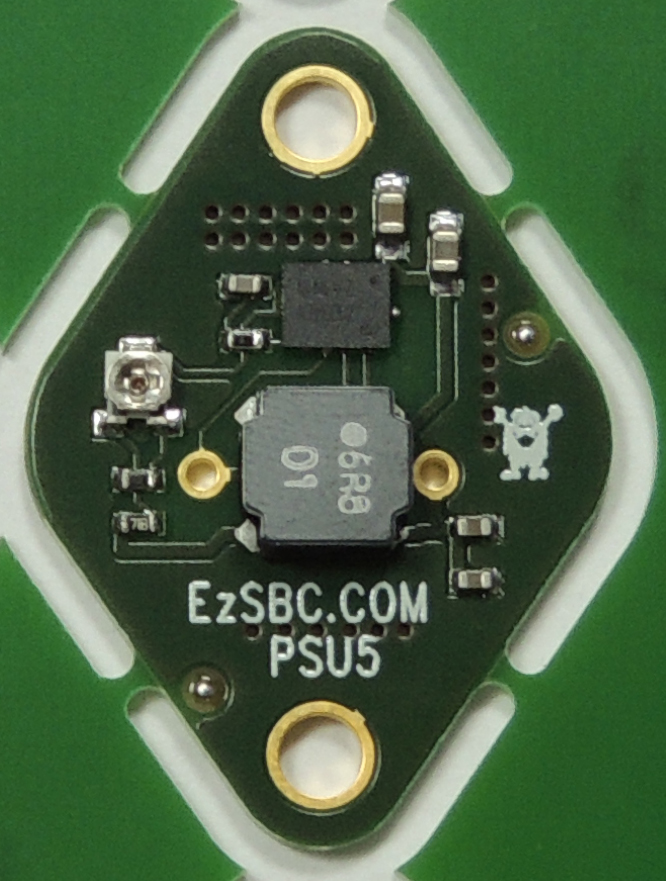The first prototypes of the LM323 Replacement were difficult to manufacture. In particular the trim resistor would not pick correctly in my pick and place machine. The hole in the center of the adjustment ring was big enough to allow enough air to leak so that it kept falling off the nozzle when the placement head accelerated. I substituted the trimmer with a different brand and the problem is resolved.
I adjusted the hole size for the pins to match the pin diameter of an original LM232. I use gold plated pins. The mechanical design of the LM323 replacement, the PSU5, is accurate enough so that it fits the sockets sometimes used beneath the heatsinks. The pins, holes and outline is a near perfect match for the original LM323. The PSU5 can supply 3.5A at 5V from a 12V input without requiring a heatsink. It can be mounted on an existing heatsink for additional cooling. The bottom of the PSU5 is flat and can be mounted directly on a heatsink or with the use of the normal isolation washer.
Like the original LM323 the bottom of the PSU5 is connected to the ground terminal. The production PCBs have been ordered and with a little luck production quantities will be available by the end of May.



